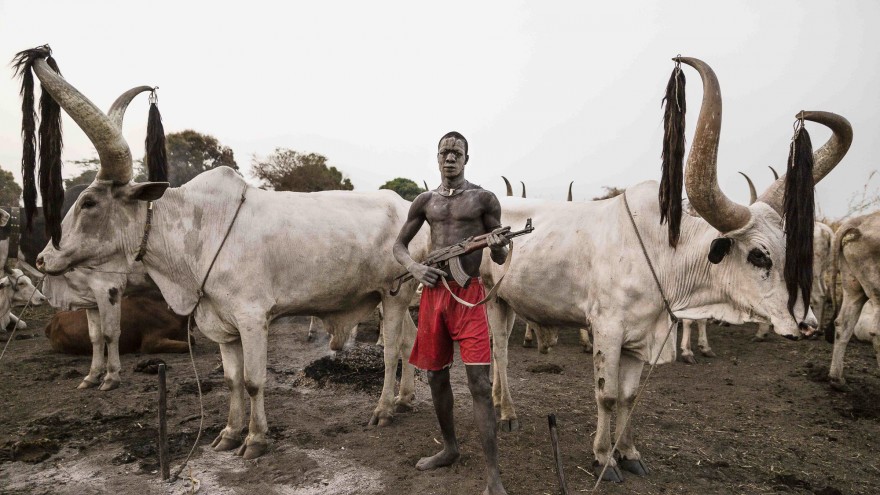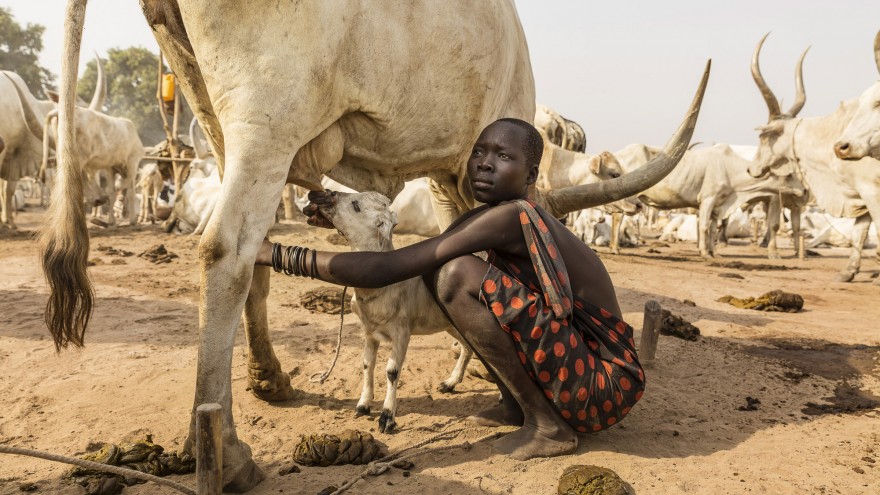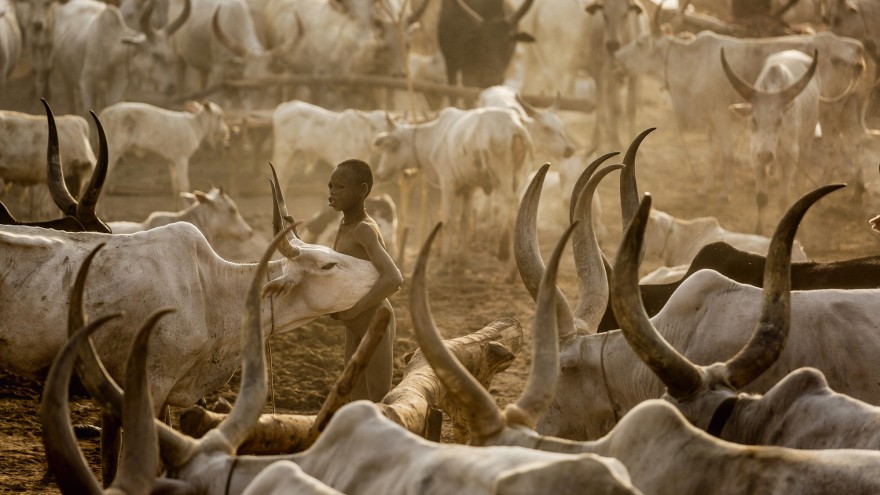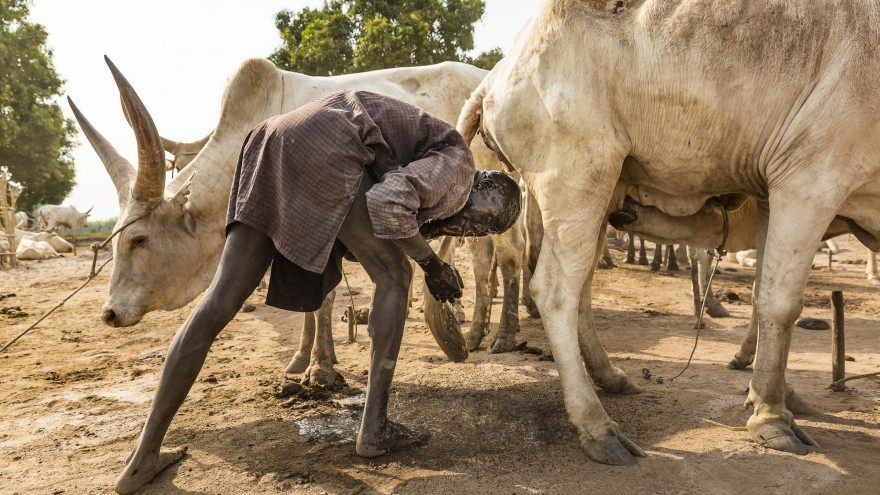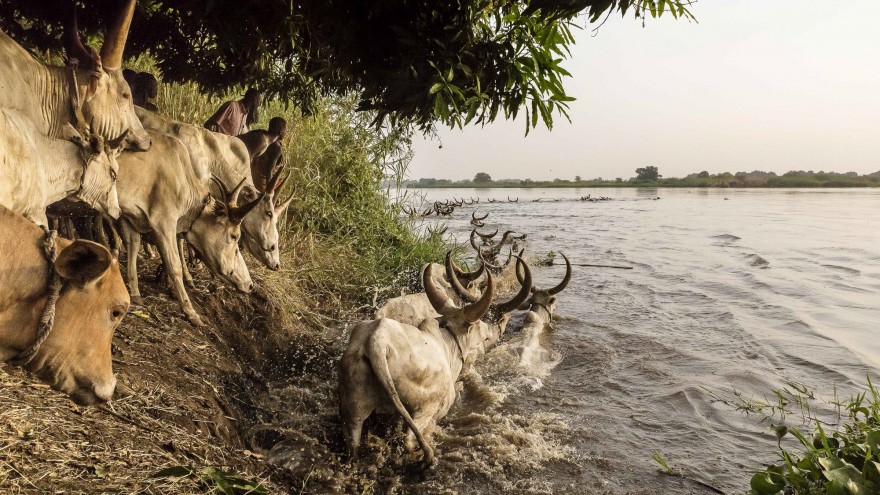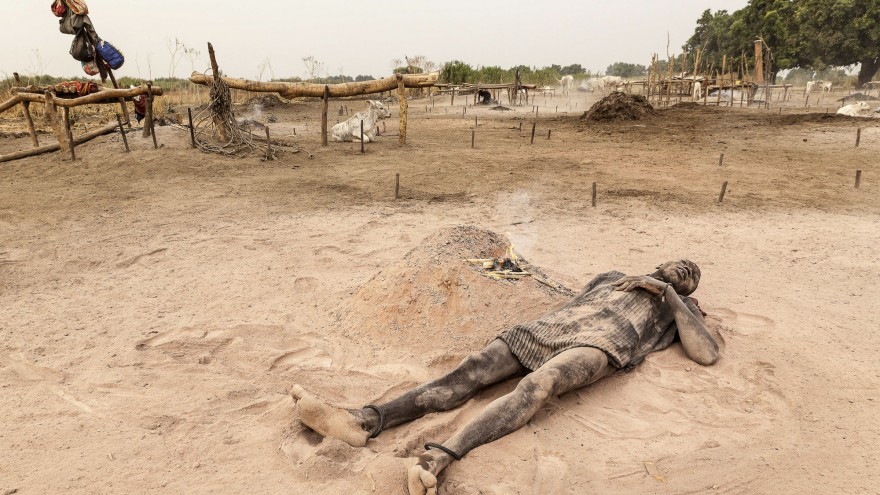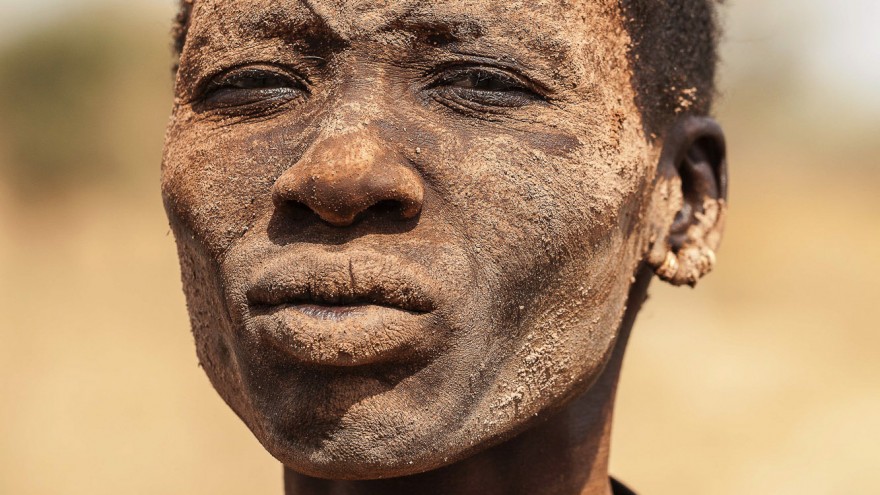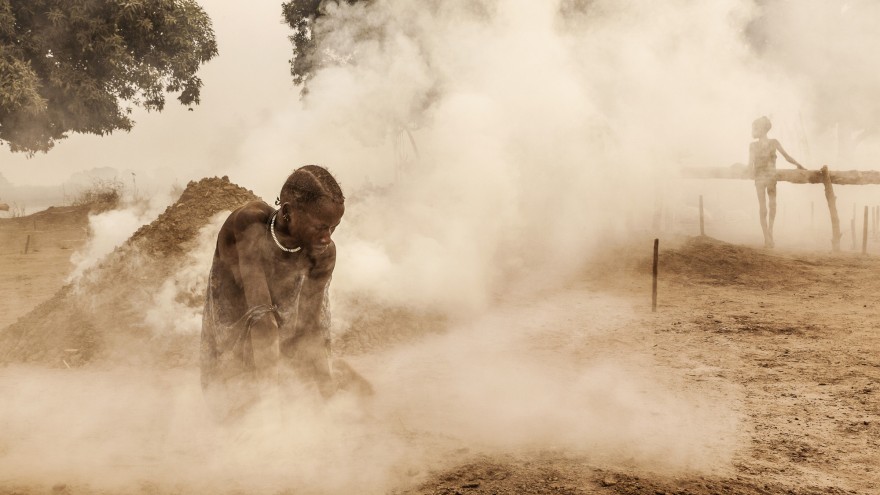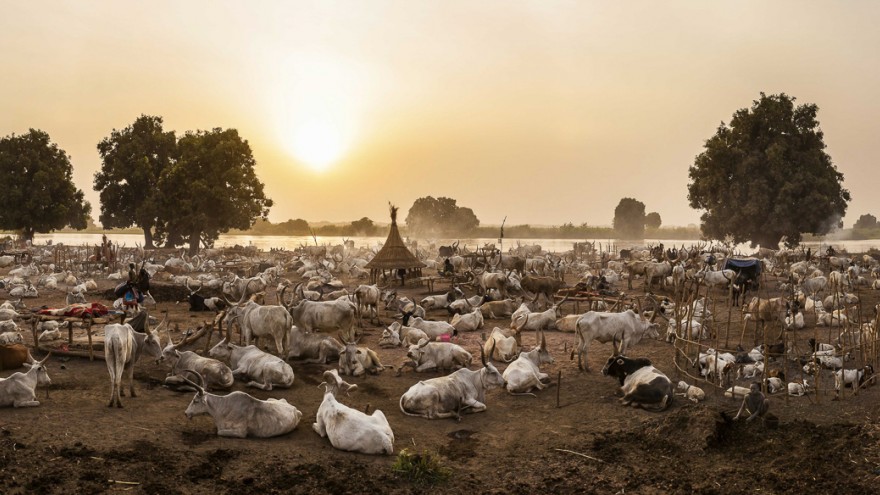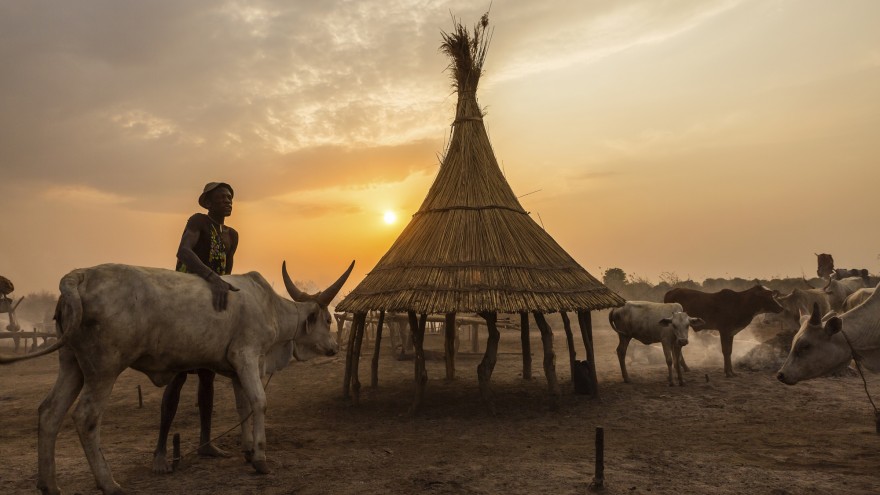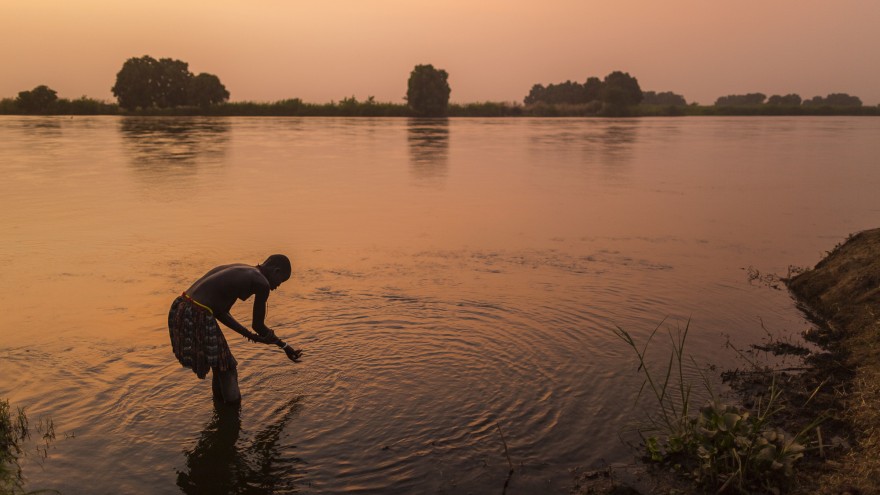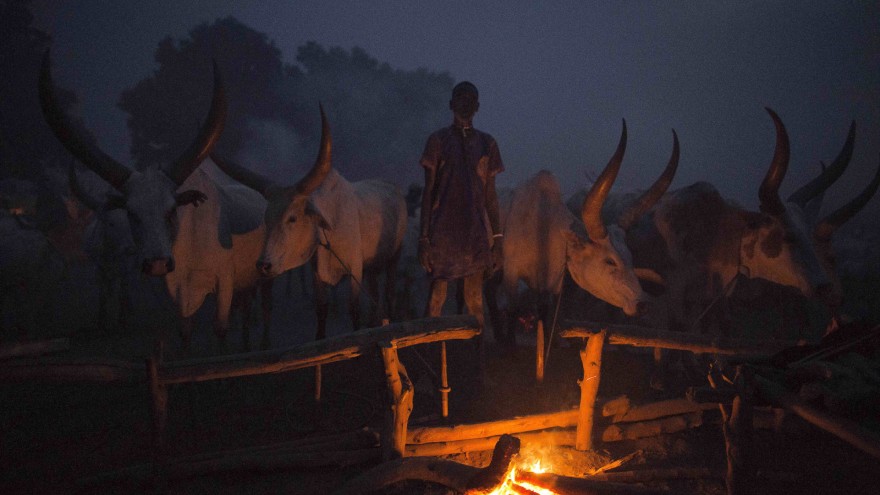For the last 10 years photographer Tariq Zaidi has been photographing tribal peoples across Africa. His latest work features the nomadic, cattle-herding Mundari tribe of South Sudan. South Sudan is amongst the most unstable nations in the world. Amongst the internal conflict and human displacement, the Mundari continue to herd their cattle across the banks of the Nile. On their journey they face the dangers of unexploded landmines and violent cattle raids from other tribes.
Cattle are hugely important and symbolic: they represent wealth and status, and are to be guarded to the death. The Mundari men stand watch over the cattle with guns.
We talk to Zaidi about his time with the tribe.
How does this project fit in with the rest of your work?
I have spent the last 10 years photographing tribes and indigenous people around the world. To date I have probably visited more than 100 countries. Travelling the world, I spend most of my time looking for people and places like this, what I would call hidden treasures of the world.
What attracts you to a community like the Mundari tribe?
When I first saw Sebastião Salgado image "Dinka group at Pagarau cattle camp, South Sudan" I felt I needed see these people for myself. I asked myself whether this place was real, and if so, does it still exist ten years after his photo was taken.
What in covering it do you wish to achieve/convey to your viewers?
Each year in South Sudan, around 350,000 cows and bulls are stolen and more than 2,500 people are killed by cattle rustlers. It is hard to overstate the importance of cattle to the Mundari people. Their animals mean everything to them, wealth, status, sustenance and dowry, and they guard them with their lives. They farm a breed of cattle called Ankole-Watusi, a distinctive white animal with curved horns, also known as "the cattle of kings". With a single cow or bull worth up to $500, it’s not surprising that Mundari men stand watch over their herd with rifles, despite a recent attempt by the government to disarm warring tribes. I wanted to show their culture and relationship with animals.
How did you interact and engage with the tribe members?
I don’t speak the tribe’s language, so for me it was less about engaging and more about watching, learning and acceptance. I spent a lot of time with them, from five in the morning to nine at night, but I remained an outsider.
Tribes live in environments which are changing very quickly and might disappear very soon, they are often up against the odds, living in physically difficult environments. I set out to remove myself of my western values and wanted to document their lives as they are right now. They still have a very unique set of cultural traditions, though I do wonder for how much longer they can sustain them.
What was your narrative angle in photographing the tribe?
Everything was natural, there was no setting up of images, it was just a question of waiting for the right light, following every move around the cattle camp and trying to create a full picture what what their lives are about.
Please describe what you feel is unique about the tribe.
Their amazing customs, traditions, relationship with their environment, and their love for their animals.
The cows are everything to the Mundari, who consume their dairy products and use burnt dung to create a talcum-powder like ash which softens their skin. The size of one’s cow can also be used to ascertain social status. The Mundari don’t produce any waste. Even cattle dung is collected in the mornings and put to good use; once mounds have been formed, the dung is burnt and the smoke keeps away any insects. Very smart of them, given that malaria poses a real risk to both humans and livestock in this part of the world.
Many of the people I encountered asked to be photographed beside their cows; a strange contrast to London, where people tend to prefer posing beside family and friends.
Another interesting thing which struck me about the Mundari was their height. Everyone was taller than me, most people were around 6’5”. From what I understand this is probably down to genetics.
What would a day with the Mundari tribe consist of?
Let me tell you. On the banks of the Nile, just north of the South Sudanese capital of Juba, dawn breaks on a Mundari cattle camp and a young man begins his morning ablutions. After cleaning his teeth with a stick, he lowers his head under a urinating cow, tethered to a post nearby. His impromptu shower will ward off infection and has the added benefit of dyeing his hair orange.
Next he rubs the peach-colored ash from last night’s dung fire into his own skin, and the hide and curved horns of his cattle. With the consistency of talcum powder, the ash is a natural antiseptic and mosquito repellant and offers man and animal protection from the intense heat.
He sucks fresh milk straight from one of his cow’s udders, and then bangs a drum to alert the rest of the tribe. It is time to take the animals to graze on new pasture.
He returns around sunset with his cattle back to the camp and washes the cows with ash, clears the ground so they can sleep on clean ground. Lights fires to provide heat for the animals for the night. Burns dung fires to create smoke around the camp to ward of insects and mosquitos both for the animals and people at the cattle camp. Finally, when all the work is done, he spends a few hours with his family and sleeps till the whole process starts again the next day.
Please share some of the highlights of your time with the tribe.
What I particularly enjoyed was:
- Their singing and music (please see the video below)
- Their respect and understanding of their environment
- Their love for, understanding of and complete dedication to their remarkable animals
- The customs, tradition and way of life: like not generating any waste – everything is used and nothing wasted. They also keep and use only what they really require
- Their respect for each other. Only one person speaks at a time in a community meeting – everyone listens - and only when that person has finished do others talk
- So many lessons that we in the western world can perhaps also learn from.

